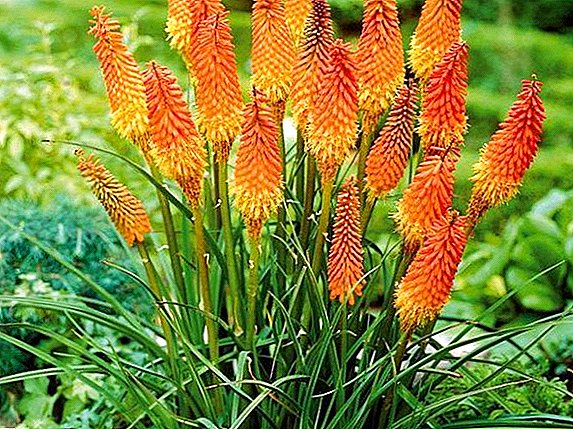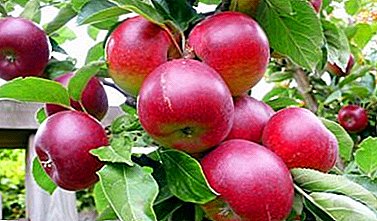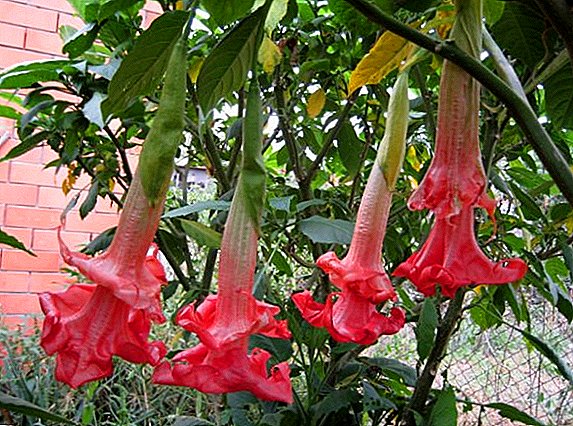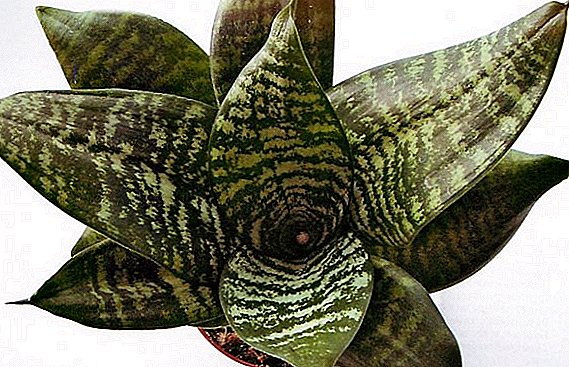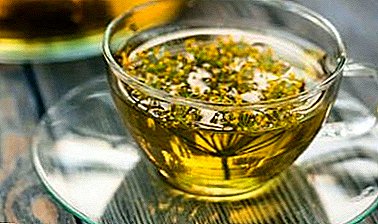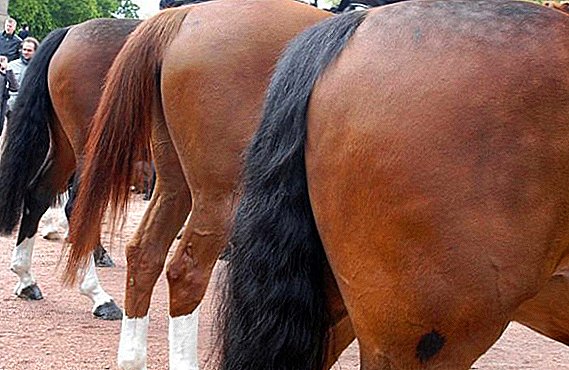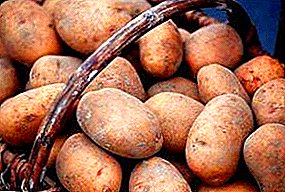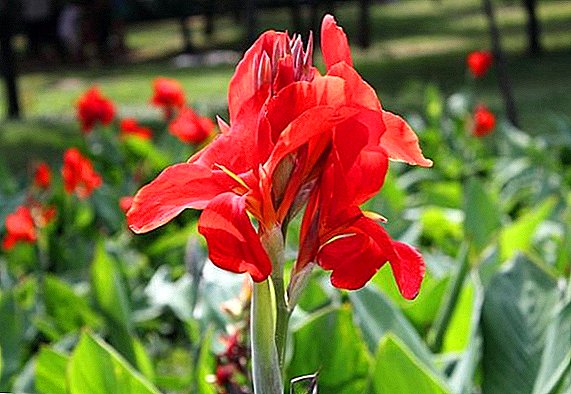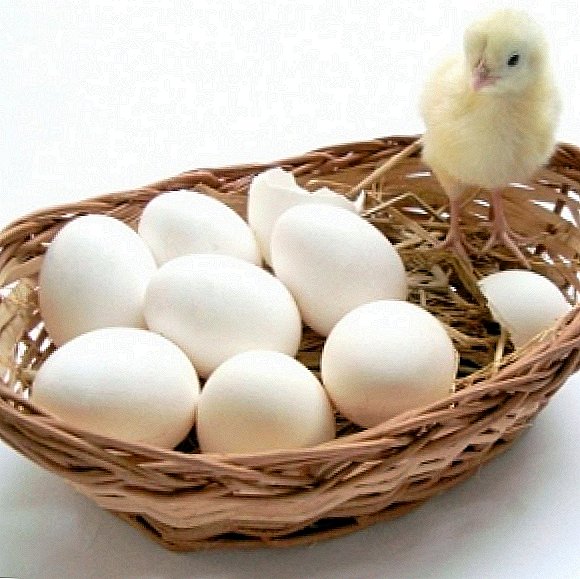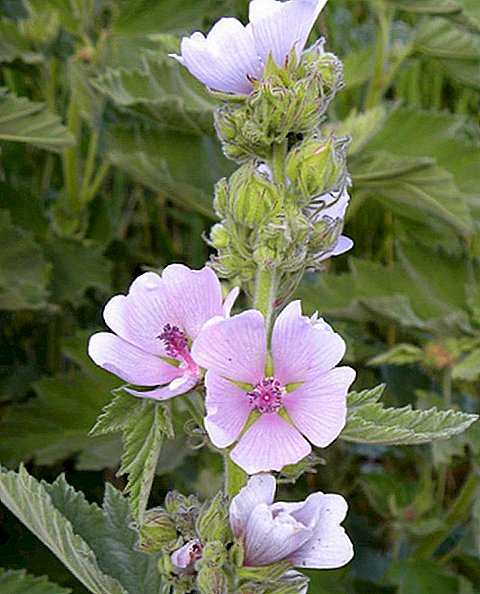 Everyone knows that the most common diseases can be treated without expensive medicines - it is enough to prepare useful herbs.
Everyone knows that the most common diseases can be treated without expensive medicines - it is enough to prepare useful herbs.
Indeed, there are a lot of healing types around us, many of whom don’t have any idea about the medical properties.
Meanwhile, a competent collection is a guarantee of successful reception in the future. Consider one of these varieties, find out what is useful Altya medicinal and what use it has found in traditional medicine.
Description and growing environment
This is a perennial herbaceous species from the Malvine family. This variety is distinguished by its size - the minimum height is 60 cm with a maximum of 2 m.
Its stems are straight, not particularly branched. On one plant, there are usually several of them (single are less common). At the bottom of the green-gray "trunks" woody, and the thickest of them have a characteristic mesh pattern of oblong grooves.
Did you know? In Soviet times, some farms of the Krasnodar Territory were cultivating Altea on an industrial scale. Some arrays are included in the turnover today (although the volumes are far from those).The leaves are arranged alternately, with a thick "down" on the bottom plate. Depending on the growth point, they differ in shape and size. Thus, the lower ones have one or two lobes and a rounded, somewhat dull shape (with a length of up to 6 cm).
 The middle and upper ones are already larger (up to 15 cm with a width of 5-12 cm) and more expressive - pointed, with a wide wedge-shaped base.
The middle and upper ones are already larger (up to 15 cm with a width of 5-12 cm) and more expressive - pointed, with a wide wedge-shaped base.The inflorescence in the form of a dense spikelet “shoots” in the summer (most often from the second decade of June), then on short pedicels there are thick arrays of small (up to 1 cm) neat flowers with a crown of pinkish or white color. Often in the sinuses appear larger flowers - 3-4 cm in diameter.
Important! Strong root instantly absorbs any substances that fall into the ground. Therefore, refrain from collecting medicinal herbs growing near busy highways.
From August to October, the plant bears fruit - flat multi-seedlings ripen, inside which are smooth seeds (gray or brown in color). Their usual "dimensions" are 2.5 x 2 mm.
A description of a variety such as Althaea officinalis will be incomplete without mentioning its main “healing part” - the rhizome. The woody main root in the form of a powerful rod can reach a length of 40-50 cm with a diameter of 2 cm. It acquires fleshy side shoots in white.  In regions with a temperate climate, forest and forest-steppe zones, the altitudes grow everywhere - its massifs can be seen in the coastal thickets and floodplains of rivers, meadows and marshy valleys. But in the north, such a plant did not begin.
In regions with a temperate climate, forest and forest-steppe zones, the altitudes grow everywhere - its massifs can be seen in the coastal thickets and floodplains of rivers, meadows and marshy valleys. But in the north, such a plant did not begin.
Chemical composition
In the roots of Althea contains a lot of useful compounds. The main ones are:
- mucous substances (about 35%). During heat treatment, they break down into arabinose and galactose, dextrose and pentose;
- starch (35%);
- pectin (at least 11%);
- sugar (8%);
- amino acids like betaine (3-4%) and asparagine (from 2%);
- fatty oils (about 1.5%);
- mineral salts;
- lecithin and carotene in small fractions.
Learn more about the beneficial properties of such plants as catnip, horsetail, ambrosia, mountaineer, skummpia, leuzea, coltsfoot, dogrose, double-leaved, laconosa, mordovnik.It should be noted that these figures are average for this variety - the content of auxiliary "ingredients" may vary depending on the state of the soil and weather conditions. For example, in the root grown on light, drained soil, asparagine can be already 15-20%.
Did you know? The conventional wisdom that almost all plants can be used for treatment is a myth. Of the more than 500 thousand species, only 12 thousand are considered medicinal (a ratio of about 1:40 is obtained).
The leaves of Althea are more saturated with mucus. Moreover, they contain a lot of essential oil and ascorbic acid.
Seeds that have saturated compounds are also distinguished. The whole line of linoleic acids stands alone (their share reaches 56%) with the addition of oleic compounds.
Medicinal properties
Thanks to this composition, the altea, inconspicuous in appearance, is distinguished by enviable healing "abilities". Most clearly they appear at the root.  With proper processing harvested rhizome:
With proper processing harvested rhizome:
- smoothes the inflammation of mucous membranes (the resulting mucus gently envelops them, softening the plaque);
- removes sputum that has accumulated in the airways (that is, is used as an expectorant);
- normalizes the process of regeneration (tissue repair);
- eliminates "failures" in the gallbladder and excretory pathways (eliminating the unpleasant burning sensation);
- gently acting on the gastric and intestinal walls, "knocks" increased acidity;
- with proper dose calculation, it plays the role of a fixative in the case of diarrhea.
Important! Homemade decoys based on Althea can not be taken simultaneously with the "factory" drugs that thicken sputum and dehydrate the body.Seeds also help well in treating sore throat, flu, or pleurisy. Decoction of seeds is able to rid the female body of postpartum secretions, while improving the output of urine.
The leaves go into the course much less often, but they also have their own "specialization" - they are useful for women who suffer from breast tumors. 
Application
The plant with such an impressive "track record" is widely used to treat various diseases. But its properties have long been noted and cosmetologists.
In medicine
The main scope of this plant is, of course, traditional medicine. Although the "official" fully approves the use of infusions (of course, as prescribed by the doctor). The attending specialist can "prescribe" marsh mallow in such cases:
- acute inflammation of the throat and respiratory tract;
- for the treatment of cough with copious mucus;
- if irritated mucous membrane of the gastrointestinal tract and adjacent pathways;
- to neutralize abscesses and faster wound healing. Also, the mild action of the herb is indispensable, if it is necessary to “calm” the inflamed nerve or to restore the damaged muscle;
- An infusion may be prescribed to treat joints (unless deep changes in their structure are observed).
Note that nutritionists know about the properties of such a plant - the ability of althea to improve peristalsis is often used when planning a course of weight loss. 
In cosmetology
We already know about the beneficial effects of Althea roots on the skin. But that's not all: in addition to rapid healing, the roots also moisturize the lining, eliminating the effects of dryness.
The liquid obtained after treatment will help strengthen the hair, at the same time solving the problem of irritation (many people face this unpleasant itch on the top of the head).
Nettle, periwinkle, marigold, linden, peony, bird cherry, enoteru, calendula, savory, parsnip, marjoram, cornflower, purslane and momordica are also used for cosmetic purposes.With regular use of broth, the hair will stop falling out, and the natural acids present in the rhizome rather quickly stimulate their growth. And all this without any chemistry.
Recipes of traditional medicine
Having already harvested and dried Althea root on their hands, many wonder how to brew it. There is nothing tricky here, and you will be convinced of this by reading the most popular recipes.
The easiest way to do so-called cold infusion, which reduces inflammation of the skin and mucous membrane of the eyes:
- Chopped root (1 tbsp. L) pour cold water and let it brew for an hour.
- Then the liquid is decanted through cheesecloth, not forgetting to squeeze well.
- Take this medicine on a tablespoon, with a break of 2-3 hours. For a more pleasant taste, you can add some honey. Also, the resulting extract is often used for compresses overnight.

Important! Too old plants when collecting avoid the side. Their root system is very massive and very hard - it’s not always possible to clean such material.
Gum, pharyngeal or tonsil inflammations are already the “front of work” for a hot infusion (it is sometimes called napar):
- Taking 15 g of already crushed spine, it is poured with a glass of boiling water.
- This is followed by a 15-minute boil in a water bath (over low heat).
- The container removed from the plate is set aside for 20 minutes for subsequent filtering.
- The regimen is the same - spoonful after 3 hours. It is advisable to take a warm liquid. For cooling, you can refrigerate, but not more than 2 days - after that, the useful compounds will begin to "evaporate."
But the most popular of the popular recipes is, of course, cough medicine, with which Althaea deals with it very quickly (as with bronchitis). Make it simple:
- To begin with, the roots are cut in large lobes (rather than small) and the billet is placed in cheesecloth, which is suspended above an empty saucepan or deep bowl.
- Through such a "sieve" shed warm water (enough 100 g).
- After allowing the liquid to drain, the “run” is repeated 8-10 times.
- At the very end, the resulting water is diluted with a couple of tablespoons of sugar and heated.
- Before taking this syrup necessarily diluted with water (50 ml per teaspoon).

Verbena officinalis, nasturtium, mulberry, juniper, black radish, melluna, common ivy, anise will help you to cough cough.Most often, such compositions treat children. Naturally, the dosage is adjusted depending on age. So, babies under 6 years old are prescribed 5-fold intake (0.5 tsp), whereas older ones (6-12 years old) are given a teaspoon. 12 years or more - you can give a tablespoon of the same frequency.
To combat acute bronchitis and pneumonia in adults, use the following recipe:
- 20 g of roots are poured with vodka (500 ml) and the container is tightly closed. It is placed in a dark corner for 10 days.
- After this period, the liquid is filtered and taken before meals three times a day (maximum 15 drops).
- It is advisable to add some warm water to smooth the alcohol smell.
Speaking of the stomach. Althaea helps to get rid of ulcers. For better effect, its root is mixed with comfrey and licorice rhizomes (in equal shares).  After grinding such a collection, 1 tablespoon of the "mix" is poured with a glass of boiling water, then boiled for 5 minutes over low heat, covering the container with a lid. Usually this is done in the evening, so as to drink a glass of broth before bedtime is still warm.
After grinding such a collection, 1 tablespoon of the "mix" is poured with a glass of boiling water, then boiled for 5 minutes over low heat, covering the container with a lid. Usually this is done in the evening, so as to drink a glass of broth before bedtime is still warm.
Elderly people will certainly be interested in an uncomplicated prescription for the treatment of joints. It is enough to fill in 10 g of a small root, usually with water in a volume of 200 ml, and insist for an hour. After that, it remains to strain and add a little sugar. 2-3 spoons every 4-5 hours will help get rid of unpleasant sensations.
With severe diarrhea they drink a decoction of mixed altea and the branches of a cucumber with wormwood. 30 g of the mixture is supplemented with 1 liter of red wine. Daily intake of warm liquid (120 ml) is carried out 4 times - on an empty stomach and one hour after each meal.
But here there is one caveat: people with high blood pressure, "problem" vessels and irregularities in the work of the heart are better to abstain from such treatment. 
Important! When buying herbal tea on the market, be sure to ask the seller when and where the harvesting was made. It would not be superfluous to clarify the name of the species - out of 12 lines of Althea, only 2 have healing properties (actually, medicinal and similar to it Armenian).
Speaking of the root, do not forget about the healthy juice from the leaves and stalks of Althea. It is used for any violations in the work of the respiratory tract, at the same time neutralizing and gastritis.
For such purposes, take blanks collected in the summer (the July gathering is best suited). Squeezed juice mixed with honey and consumed three times a day, a tablespoon.
Collection and storage of therapeutic raw materials
Plants growing in one place for at least 2 years are suitable for medicinal harvesting - “first years” or just the arrays that have appeared simply will not give the expected effect.
April-May are considered to be the best time to harvest the roots (if the spring was cold, it can be harvested in the fall, at the same time preparing the seeds). Stems with leaves are trying to take in June - early July, during flowering and peak circulation of the juice. In the case of the root, the initial processing looks like this:
- Dig out the rhizome cleaned from the ground and stems.
- Then comes the turn of the core (aka “wooden”) root and gadfly segments. Do not forget to remove non-lignified processes.
- The billet is washed and dried for 3-4 days.
- With further cutting, raw materials are cut into pieces of 25-30 cm, splitting the thickest fragments in the longitudinal direction. At the same time, the "cork" is also removed - everything, the root is cleared.
Did you know? Historians are convinced that medicine as such began precisely with the use of roots for medicinal purposes - primitive people tried in this way to get rid of annoying ailments (mainly dental problems).
- The resulting material is stored in a warm, well-ventilated area. In the summer you can put in the attic, and with the onset of cold weather - wrap in cotton fabric or hang in the closet.
With this content, all collected parts of the plant will retain their beneficial properties for 3 years. 
Contraindications and side effects
We have seen that Althea root has extensive medicinal properties, but, like any healing agent, perennial has its contraindications.
There are not so many of them, but it is impossible to discard them from the account (as well as to self-medicate).
Reception of tinctures, decoctions and juice obtained from this plant is prohibited if there are such health problems:
- individual intolerance;
- chronic hypertension;
- diabetes.
Side effects can manifest themselves in the form of allergic reactions (therefore, the first couple of doses are often taken in reduced doses in order to observe the reaction of the body). If, however, "to sort out" with a dose or to make part of the reception, then the appearance of severe nausea or vomiting.
Important! Such syrups can be used during pregnancy (if the doctor "gave the go-ahead" to such an appointment). Of particular value at this time is the fixing effect, "calming" diarrhea.

Did you know? In some regions, marshes are referred to as wild rose, mucus-grass, marshmallow, dog mug, or kalachik.Now you will surely be able to find a healing marsh mallow and make stocking up. We hope that the processing of this raw material will show maximum prudence, and decoctions will only benefit. Good health!


